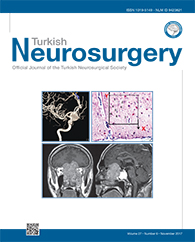2Southern Medical University, Nanfang Hospital, Nanfang Neurosurgery Research Institution, Guangzhou, China DOI : 10.5137/1019-5149.JTN.17746-16.1 AIM: The U251 and U87 cell lines are commonly used as experimental models of glioblastoma. However, these cells exhibit significant differences in their proliferation, invasion, and migration. The aim of the present study was to compare the protein expression profiles of the U251 and U87 cell lines in order to provide a molecular basis for the observed phenotypic differences.
MATERIAL and METHODS: Isobaric tags for relative and absolute quantitation (iTRAQ) and gene ontology (GO) analyses were performed to detect differentially expressed proteins and to predict protein functions, respectively.
RESULTS: Two hundred and forty-four proteins were highly expressed, while 263 proteins exhibited lower levels of expression, in the U251 cells compared to the U87 cells. In particular, higher expression levels of the proteins, C10orf58, FLNC, PDLIM1, TPM4, and lower expression levels of MYH10, PSIP1, SYNM, SLC9A3R2, BCAM, were verified by qPCR in the U251 cell line versus the U87 cell line. When a GO analysis was applied to the iTRAQ results, the proteins that were highly expressed in the U251 cells were found to differ in their molecular functions, biological processes, cellular distribution, and cellular pathways associated with them compared with the highly expressed proteins detected in the U87 cells.
CONCLUSION: Differentially expressed proteins between the U251 and U87 cell lines are associated with regulation of nicotinamide nucleotide metabolism, RNA splicing, glycolysis, and purine metabolism pathways. Further studies on these pathways may identify whether these various pathways account for the observed phenotype differences between the U87 and U251 GBM cell lines.
Keywords : Glioblastoma, U87 cell line, U251 cell line, Proteome, Gene ontology




